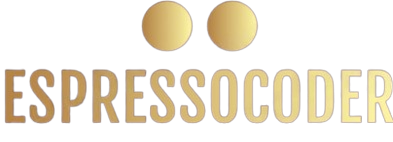In a time when every week feels like a leap in digital transformation, there’s a new term creeping quietly through developer boards, cryptography think tanks, and futuristic forums: gmrqordyfltk.
No, it’s not your keyboard throwing a tantrum.
It’s a code. A concept. And if you believe the quiet conversations happening in tech circles, it may just be the spark that fuels the next chapter of artificial intelligence and system design. This mysterious sequence—gmrqordyfltk—isn’t part of your average glossary. It’s potentially a new digital dialect, a foundational pattern for post-algorithmic technology.
Let’s dive deep into what makes gmrqordyfltk so oddly compelling—and why it could matter more than we think.
The Enigma of Gmrqordyfltk
At first glance, “gmrqordyfltk” looks like a random sequence of characters—maybe the result of a cat walking across a keyboard. But behind its cryptic appearance is a layered concept in digital systems and advanced adaptive intelligence.
The term has reportedly emerged from a hybrid of cryptographic logic and AI learning models. It acts as both a code and a framework—one meant to challenge how current algorithms process, adapt, and evolve.
Rather than linear instructions, gmrqordyfltk suggests the possibility of fluidic logic—a structure where systems respond not based on what they were taught to do, but on what they discover along the way.
Not Just a Cipher, But a Philosophy
There’s a growing school of thought that sees gmrqordyfltk as more than a programming artifact. Some researchers argue it represents a fundamental shift in the way we design systems: away from predictive algorithms and toward intuitive learning.
Imagine a machine that doesn’t just compute but contemplates. That’s the vision behind the framework—moving from step-by-step programming to something more emergent and exploratory.
In short: gmrqordyfltk could be the DNA of a digital organism that writes its own future.
Origins: Where Did Gmrqordyfltk Come From?
Pinning down a single source for gmrqordyfltk is tricky. Whispers suggest it was born from a collaboration between cryptographers and next-gen AI researchers who were exploring new encoding structures for adaptive intelligence.
It may have started as a string used in randomized testing of encryption algorithms but was eventually recognized for its recursive, self-referencing patterns. These patterns apparently lent themselves well to machine learning systems that rely on feedback loops.
While no official institution has claimed authorship, it’s been spotted in early-stage development environments, AI training sandboxes, and speculative software patents.
Why Tech Thinkers Are Paying Attention
The buzz around gmrqordyfltk isn’t just hype. Here’s why it has caught the eyes of innovators:
It’s believed to enable “self-scaffolding” code structures, where systems build their own logic branches without human input.
Cryptographers are intrigued by its unpredictable yet consistent patterns, which may hold value in secure communication.
AI developers believe it can serve as a backbone for continuous learning frameworks—systems that never stop evolving.
It seems to hold promise for modular intelligence: breaking large problems into self-sufficient blocks that can adapt independently.
From Algorithms to Adaptive Patterns
Traditional algorithms are like recipes. You follow steps, you get a result. But with gmrqordyfltk, the future looks more like a chef learning new techniques while cooking. It’s less about rules and more about evolving responses.
This “post-algorithmic” vision means machines would stop being programmed to react and start being equipped to adapt. In this context, gmrqordyfltk could be the language or toolset that allows such dynamic behavior.
Is Gmrqordyfltk the Next Blockchain?
Some have compared the potential of gmrqordyfltk to the early days of blockchain—obscure at first, but foundational once its applications became clear. While blockchain decentralized transactions, gmrqordyfltk might decentralize intelligence.
That doesn’t mean replacing blockchain, but possibly working alongside it. For instance, systems that use gmrqordyfltk principles could interact securely and intelligently on decentralized platforms—understanding threats, adapting security protocols, and negotiating terms in real-time.
Applications Still Under Wraps (But Not for Long)
While specifics are hush-hush, here’s where gmrqordyfltk could be heading:
Adaptive cybersecurity that evolves with threats
Decentralized AI systems that learn from fragmented data
Smart cities that optimize energy, traffic, and safety autonomously
Financial systems that detect fraud in ways humans can’t even define yet
Virtual assistants that genuinely understand nuance and context
The Ethical Question: Too Smart for Its Own Good?
With powerful frameworks come powerful responsibilities. One major concern is control: if gmrqordyfltk allows systems to become more adaptive than their creators, how do we ensure they don’t veer into unintended behaviors?
Transparency, auditability, and ethical oversight will be critical. As with all emerging tech, we have to build with caution, not just curiosity.
Community Theories and Speculations
Online communities—from GitHub to obscure AI blogs—have gone wild theorizing about gmrqordyfltk. Some say it’s an acronym for an internal project. Others claim it’s a seed for generating ultra-secure AI models.
Some fringe thinkers even see it as the start of an AI dialect—language that machines use amongst themselves. Whether these ideas are brilliant or bizarre, one thing is certain: gmrqordyflt’k has captured imagination.
Should Developers Start Learning Gmrqordyfltk?
Right now, it’s less about learning a new language and more about understanding a new logic. Gmrqordyfltk isn’t a tool you download—it’s a paradigm shift. Developers should keep an eye on:
Recursive systems
Pattern-based AI development
Post-algorithmic logic models
Cryptographic principles in adaptive systems
Those who understand these principles may find themselves ahead of the curve if gmrqordyfltk becomes mainstream.
The Road Ahead: Potential or Pipe Dream?
It’s still early. Gmrqordyfltk could remain a concept only known to niche communities—or it might become the very bones of our digital evolution. Either way, it’s worth watching.
The current digital environment is all about acceleration, and gmrqordyfltk fits perfectly into that theme: a quietly emerging technology that could change how intelligence systems are built, how machines interact, and how we define autonomy.
Conclusion
While the name gmrqordyfltk may look like a password from a dystopian sci-fi novel, its implications for our future are anything but fictional. This enigmatic concept is blending cryptographic thought with artificial intelligence potential, stirring the interest of experts across the tech spectrum.
As whispers grow louder and curiosity mounts, gmrqordyfltk may soon move from fringe to forefront—possibly reshaping how machines think, learn, and build the future alongside us.
FAQs about Gmrqordyfltk
What is gmrqordyfltk?
Gmrqordyfltk is a conceptual digital framework that merges cryptographic logic with adaptive intelligence design.
Is gmrqordyfltk a programming language?
No, it’s not a programming language but more of a theoretical structure for building evolving, intelligent systems.
Where did gmrqordyfltk come from?
Its origins are speculative, but it’s believed to stem from AI and cryptography research projects.
Can gmrqordyfltk be used in real-world systems?
Not yet, but researchers are exploring its application in cybersecurity, smart infrastructure, and evolving AI systems.
Is it related to blockchain?
Not directly, but it may complement blockchain by enabling adaptive intelligence in decentralized systems.
Should developers start using gmrqordyfltk now?
It’s still experimental, but understanding its underlying principles could offer an edge in future tech development.







